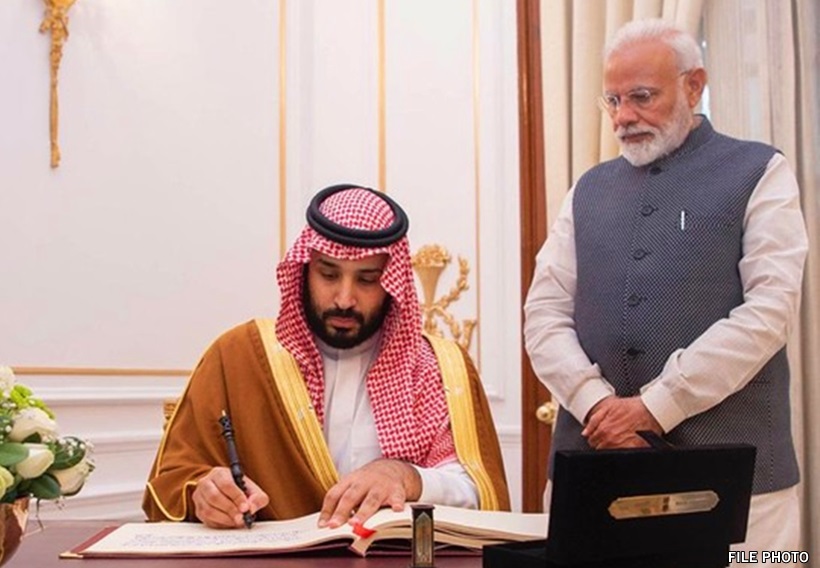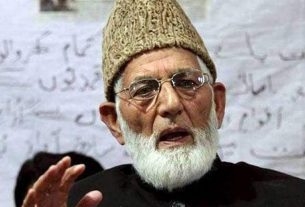Sun 26 January 2020:
Last year marked the start of a new era in bilateral relations between India and Saudi Arabia, with two very successful high level visits. Crown Prince Mohammed bin Salman visited India in February, and Indian Prime Minister Narendra Modi came to Saudi Arabia in October.
The momentum for this evolution of the relationship began during Modi’s visit to the Kingdom in April 2016, during which he was presented with the Sash of King Abdul Aziz, the highest civilian decoration awarded by King Salman.
This recognition was an indication of the importance the Kingdom attaches to its relations with India.
The momentum increased a year ago with the crown prince’s visit to India, during which he and Modi discussed prospects for bilateral cooperation in all fields, along with other issues of mutual interest.
The growing bilateral ties were reflected in the announcement of Saudi investments in India worth $100 billion, an increase in India’s Hajj quota from 170,000 to 200,000; the release of 850 Indian prisoners held in Saudi prisons for minor offenses, and the confirmation of India as one of the Kingdom’s strategic partner countries under Vision 2030, complete with a proposal to set up a high-level partnership council.
After an invitation by King Salman, Modi made an official visit to Riyadh in October last year.
The two leaders underlined the close and friendly bilateral ties that are deep-rooted in the shared history of their nations, and which are sustained and nourished by a growing economic partnership, multifaceted cooperation and vibrant people-to-people contacts.
Modi also delivered a keynote address at the third session of the Future Investment Initiative, in which he reiterated India’s intention to work hand-in-hand with Saudi Arabia on Vision 2030.
Modi and the crown prince signed an agreement for the establishment of a joint Strategic Partnership Council, which they will lead. It will provide the framework under which bilateral cooperation across all sectors will be arranged.
Eleven other agreements were signed during Modi’s visit in a number of fields including security cooperation, defense industry collaboration, civil aviation, renewable energy, diplomatic institutions, anti-drug trafficking, strategic petroleum reserves, small and medium enterprises, stock exchanges and the launch of Rupay card.
Saudi Arabia is a long-time, reliable partner in catering to India’s energy needs.
The Kingdom has been a leading supplier of crude oil for decades, and India imported 18 percent of its energy needs from Saudi Arabia in 2018/19. A steady supply of crude to India was maintained despite the attacks on oil installations in the Kingdom in September 2019.
Over the years, India and Saudi Arabia have progressed from a buyer-seller relationship to a strategic partnership in terms of prospective Saudi investments in the downstream energy sector. As a major step toward this, Saudi Aramco has ventured into India’s refinery business.
Indian Consortium, consisting of Indian Oil Corporation Limited, Bharat Petroleum Corporation Limited and Hindustan Petroleum Corporation Limited, signed a memorandum of understanding with Saudi Aramco in April 2018 to jointly develop the $44 billion West Coast Refinery Petrochemical Project Limited in the state of Maharashtra. In June 2018, the UAE’s ADNOC signed an agreement with Aramco to become a partner in the development of the project.
The 1.2 million barrels-per-day (bpd) greenfield integrated refinery and petrochemicals complex will be supplied with 600,000 bpd of Saudi crude.
Saudi Aramco also signed a memorandum of understanding with Indian Strategic Petroleum Reserves Limited in October last year to participate in India’s Strategic Petroleum Reserves. In addition, Aramco has been exploring ways to enter the Indian market through collaborations with the private sector, as well as acquiring stakes in Indian public sector undertakings under government’s disinvestment scheme.
Bilateral trade has been enhanced over the years, both in volume and composition. Saudi Arabia is India’s fourth-largest trading partner. In 2018-19, bilateral trade increased by 23.83 percent to $34.03 billion. During this period, India’s imports from the Kingdom reached $28.47 billion, a rise of 29 percent over the previous year, while exports to Saudi Arabia stood at $5.55 billion, an increase of 2.61 percent. Bilateral trade for the period from April to November last year is valued at $22.03 billion.
HIGHLIGHTS
• Prime Minister Narendra Modi delivered a keynote address at the third session of the Future Investment Initiative, in which he reiterated India’s intention to work hand-in-hand with Saudi Arabia on Vision 2030.
• Over the years, India and Saudi Arabia have progressed from a buyer-seller relationship to a strategic partnership in terms of prospective Saudi investments in the downstream energy sector.
Several major Indian companies operate in the Kingdom in a number of sectors. According to a recent report by the Saudi Arabian General Investment Authority, in 2019, 140 Indian companies were granted licenses to enter the Saudi market, the highest for any single country.
Renewable energy is another sector in which there is a convergence of interests. India and Saudi Arabia have set an ambitious target for increasing the renewable energy content of their respective power-generation portfolios, and this warrants a strong partnership. In February last year, the Kingdom became the 73rd member of the International Solar Alliance. India and Saudi Arabia signed a memorandum of understanding for cooperation in the field of renewable energy the following October.
Defense relations constitute a significant element of the shared strategic vision for the region, and are testimony to India’s strong ties with the Kingdom. In the extant regional and international geostrategic disposition, strategic relations between India and Saudi Arabia are progressing well.
Regular consultations on defense matters take place through established channels of cooperation, and a range of avenues have been explored and initiated. Rapid progress has been made through high-level visits by defense chiefs, expert exchange programs, training, delegation-level interactions, joint exercises.
There is also collaboration in counterterrorism efforts, regional maritime security, cybersecurity, joint defense manufacturing, in addition to a focus on mutual regional and international security issues.
Contacts between the peoples of the two countries come in a variety of forms, including cultural exchanges and Hajj and Umrah pilgrims. They form the bedrock of Indo-Saudi bilateral relations. The cultural similarities and the geographical proximity to India have made the Kingdom a preferred destination for Indians looking for employment opportunities in other countries. The 2.6 million-strong Indian diaspora is the largest expatriate community in the Saudi Arabia.
Two years after the landmark visit by Modi to Riyadh in 2016, India was named guest of honor at the 2018 edition of Janadriyah, the prestigious annual Saudi festival of culture and heritage.
The organization of Hajj pilgrims is the largest operation handled by Indian government outside of its own borders and is one of the key components of the bilateral relationship.
Last year, a record 200,000 Indian pilgrims were able to realize the most cherished dream of their lives by successfully completing Hajj. India’s Hajj quota was increased from 170,000 during the visit of Crown Prince Mohammed bin Salman to India last February.
-Arab News
Think your friends would be interested? Share this story!





